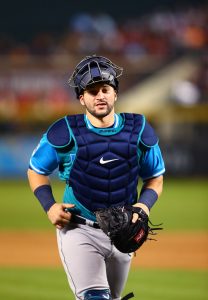The latest episode of the MLB Trade Rumors Podcast is now live on Spotify, Apple Podcasts, and wherever you get your podcasts! Make sure you subscribe as well! You can also use the player at this link to listen, if you don’t use Spotify or Apple for podcasts.
This week, host Darragh McDonald is joined by Tim Dierkes of MLB Trade Rumors to discuss…
- The Giants sign Matt Chapman (2:50)
- Why do the Giants and other clubs keep giving players these opt-out deals? (6:45)
- What is the logic with Chapman and Cody Bellinger settling for these short-term deals? (10:20)
- What’s next for the Giants? Will they trade J.D. Davis? Go after Blake Snell or Jordan Montgomery? (13:50)
- Why didn’t the Yankees or Mariners go after Chapman? (17:00)
- Phillies sign Zack Wheeler to extension (18:30)
- Should players focus more on guarantees or average annual values? (20:15)
- Did Shohei Ohtani not push things forward enough for players? (22:15)
- Was Wheeler not concerned about maximizing his guarantee? (25:10)
- What does the future look like for the Phillies? (26:35)
- What’s up with Snell and Montgomery now? Could the Orioles swoop in? (29:35)
- Does the Lucas Giolito news spur the Red Sox to jump on Snell or Montgomery? (31:20)
- What about other dark horses for Snell or Montgomery? (34:15)
- The case for the Brewers being a dark horse (35:55)
Plus, we answer your questions, including…
- Is the late signing by the Boras clients a result of just how the market played out or the strategy of holding out? How does Boras spin this? (39:15)
- Are we seeing the end of the Scott Boras era? Especially with players more to their mid-30s. I’m not sure how you could objectively look at how the offseason has gone for his clients and think it was a win for them. (44:45)
Check out our past episodes!
- How Cody Bellinger’s Deal Affects The Other Free Agents And Why The Offseason Played Out Like This – listen here
- Finding Fits For The “Boras Four,” Which Teams Could Still Spend? And Rob Manfred In His Last Term – listen here
- Jorge Soler, Veteran Catcher Signings and the Padres’ Payroll Crunch – listen here
The podcast intro and outro song “So Long” is provided courtesy of the band Showoff. Check out their Facebook page here!
 “With profound gratitude, I am announcing my retirement from Major League Baseball after 11 seasons,” Zunino says in the post. “As I reflect on my career, I am appreciative of the support of the baseball community and those who have guided me along the way.” He goes on to thank the Mariners, Rays and Guardians, their fans, the MLBPA, team staff and teammates, as well as his advisors, representatives and family members. “While my time on the field has concluded, my passion for baseball remains as strong as ever, and I eagerly anticipate exploring new avenues to contribute to the sport. I am excited to bring what I have learned in the game to the next generation of MLB players, and to give back to the game that has given so much to me.”
“With profound gratitude, I am announcing my retirement from Major League Baseball after 11 seasons,” Zunino says in the post. “As I reflect on my career, I am appreciative of the support of the baseball community and those who have guided me along the way.” He goes on to thank the Mariners, Rays and Guardians, their fans, the MLBPA, team staff and teammates, as well as his advisors, representatives and family members. “While my time on the field has concluded, my passion for baseball remains as strong as ever, and I eagerly anticipate exploring new avenues to contribute to the sport. I am excited to bring what I have learned in the game to the next generation of MLB players, and to give back to the game that has given so much to me.” Going into 2019, he had two years of club control remaining but was traded to the Rays as part of a
Going into 2019, he had two years of club control remaining but was traded to the Rays as part of a 